This air fryer roast pork is so simple to make and is perfect for family dinners. With the easiest, perfect crispy crackling and tender, succulent meat, you’ll love the results when roasting in the air fryer!
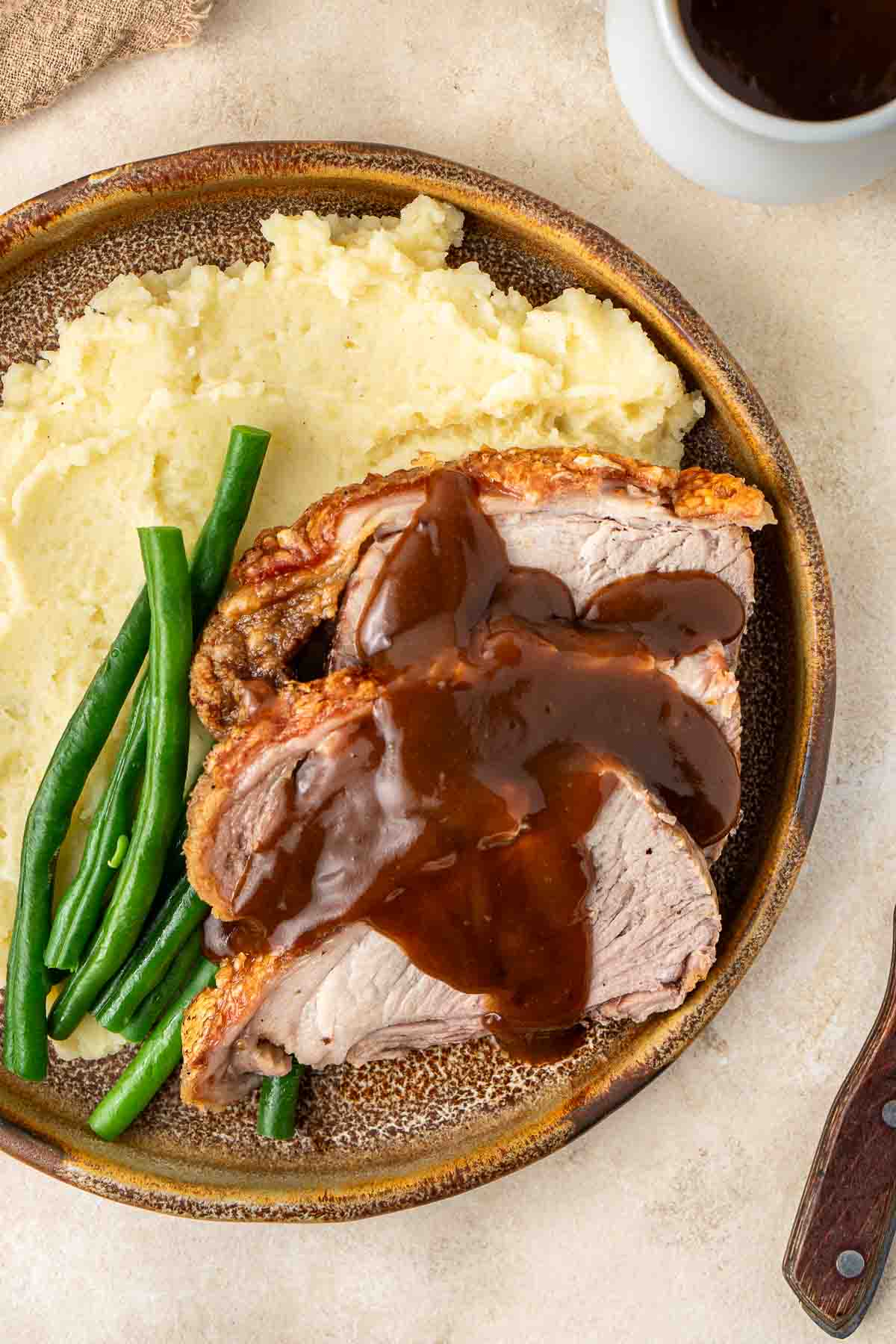
The most common hesitation I hear from people about investing in an air fryer is not knowing what and how to cook in them. I was the same, thinking they were only useful for cooking pre-made, frozen foods.
How wrong I was. Since I’ve started building up a repertoire of air fryer recipes, I’ve come to understand just how powerful this machine is. Not only does it make food easier, cleaner, and quicker, but often the results are so much more flavourful.
With traditionally dry proteins such as chicken and pork, the air fryer is able to lock in the moisture and the result is so much more delicious than when oven baked. I mean go have a look at these air fryer pork chops – they are so tender and juicy!
While the roast pork meat itself is delicious, what we’re all wanting when making a pork roast is of course that crispy crackling and the air fryer is the secret! It’s so addicting to eat and so much easier to achieve than any time I’ve tried in the oven.
Let’s jump straight into how so you can feel confident to whip up a simple pork roast in the air fryer this week!
Key Ingredients
You really don’t need much to make this pork roast in the air fryer! The main thing will be deciding on the sides to serve with your classic roast.
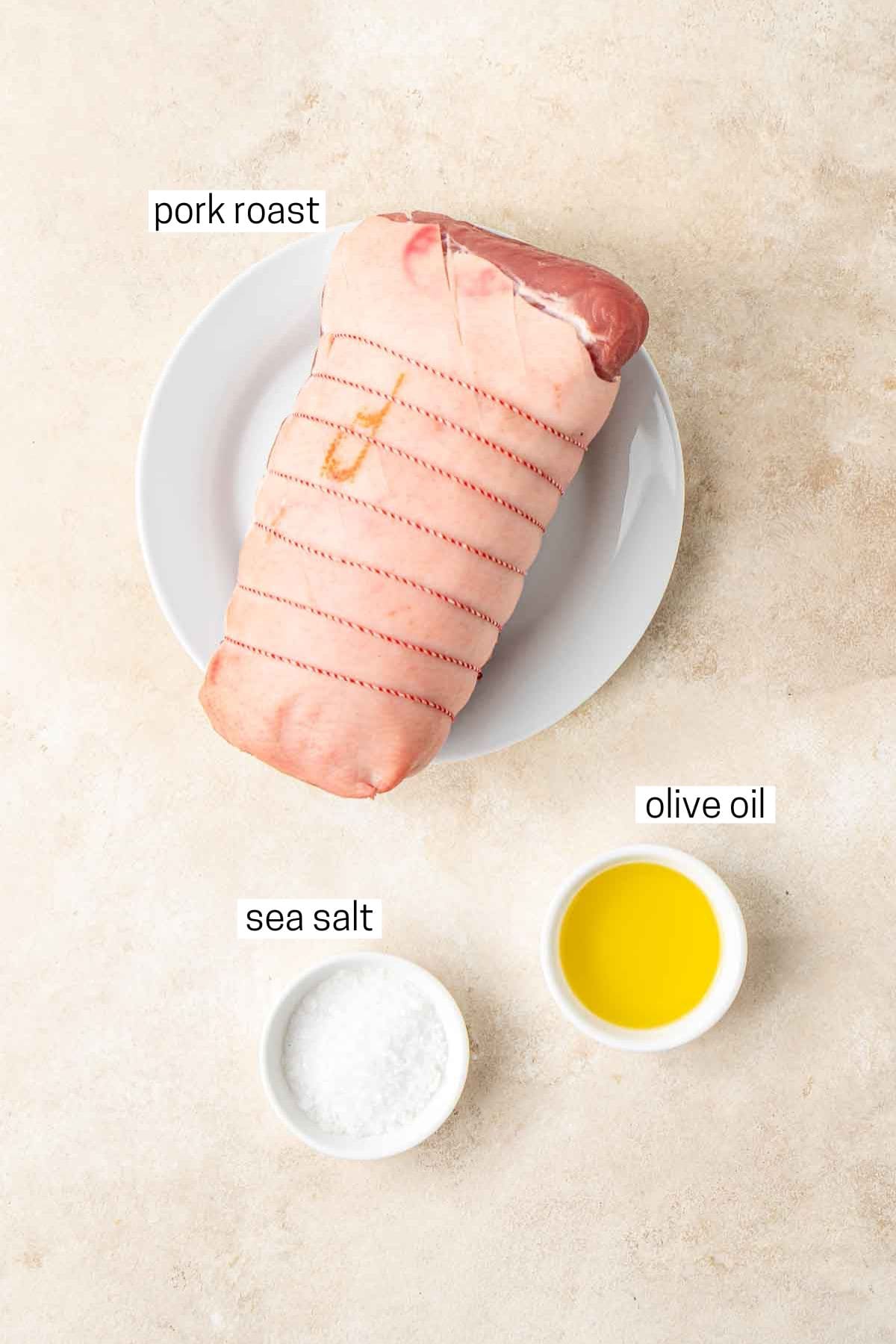
Note all ingredients and their quantities are laid out in the recipe card at the bottom of this post.
- Pork Roast – your pork roast will completely be decided on the size of your air fryer. I have a small 4.1 L air fryer which is more suitable to my 2 person household rather than a family so this fits a 1-1.2kg (2-2.5 lbs) pork leg roast. For a larger air fryer you might be looking more for a 1.5kg (3 lbs) roast.
- Olive oil – will help achieve the crispy crackling.
- Salt – you want to use course sea salt or sea salt flakes rather than table salt to achieve the crispy crackling which let’s face it is the best part of roast pork.
Equipment and Tools
This section may contain affiliate links which means I make a small commission on any purchase made with no extra cost to you. If you’re considering purchasing on Amazon I’d be so grateful if you would do so by first clicking one of these links. Thank you for your ongoing support.

Air fryer – It’s no surprise you’ll need an air fryer to make this recipe. This is the one I have which I love and use a lot! It is perfect for 2 people, but if you’re feeding a family look for an XL or XXL size.
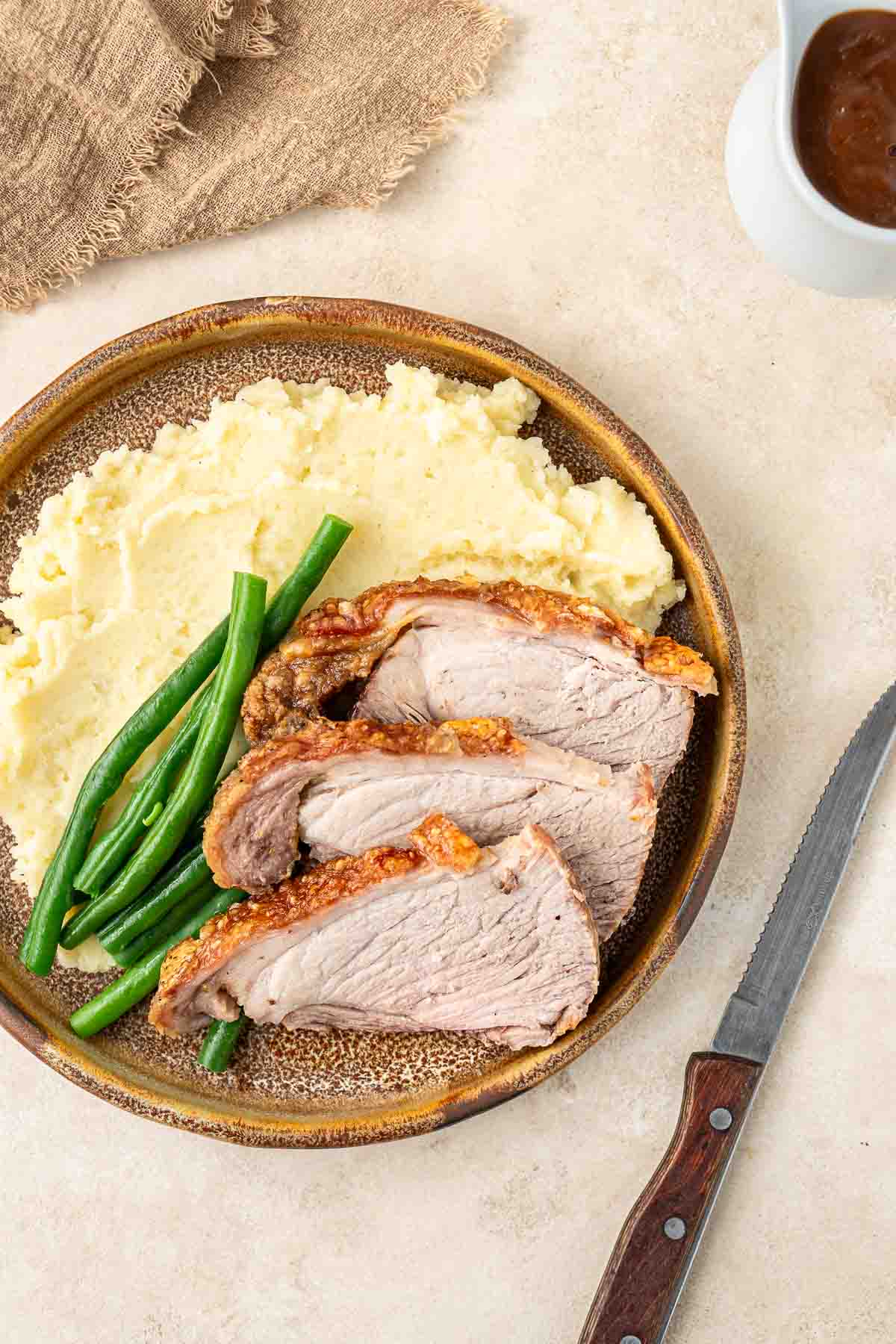
Step-By-Step Instructions
Before we get started, just a note that all air fryers are slightly different in terms of size and cooking times / temperatures. Use this method as a guide and adjust as needed based on your pork roast and air fryer.
Start by preparing your pork. To ensure the crackling gets super crispy, I recommend that you take the pork out of its wrapping, pat it dry with a paper towel and let it sit on a plate, uncovered, in the fridge overnight to dry out.
This step will greatly help get that light and crunchy crackling. If you don’t have time, even 1 hour in the fridge to dry out will help!
Next, depending on your roast it may come tied and scored already. You can leave the twine on, however I find removing it helps the crackling. You may also need to score the rind further than what has been done so it’s even. Take care to only cut the rind, and not all the way through to the meat.
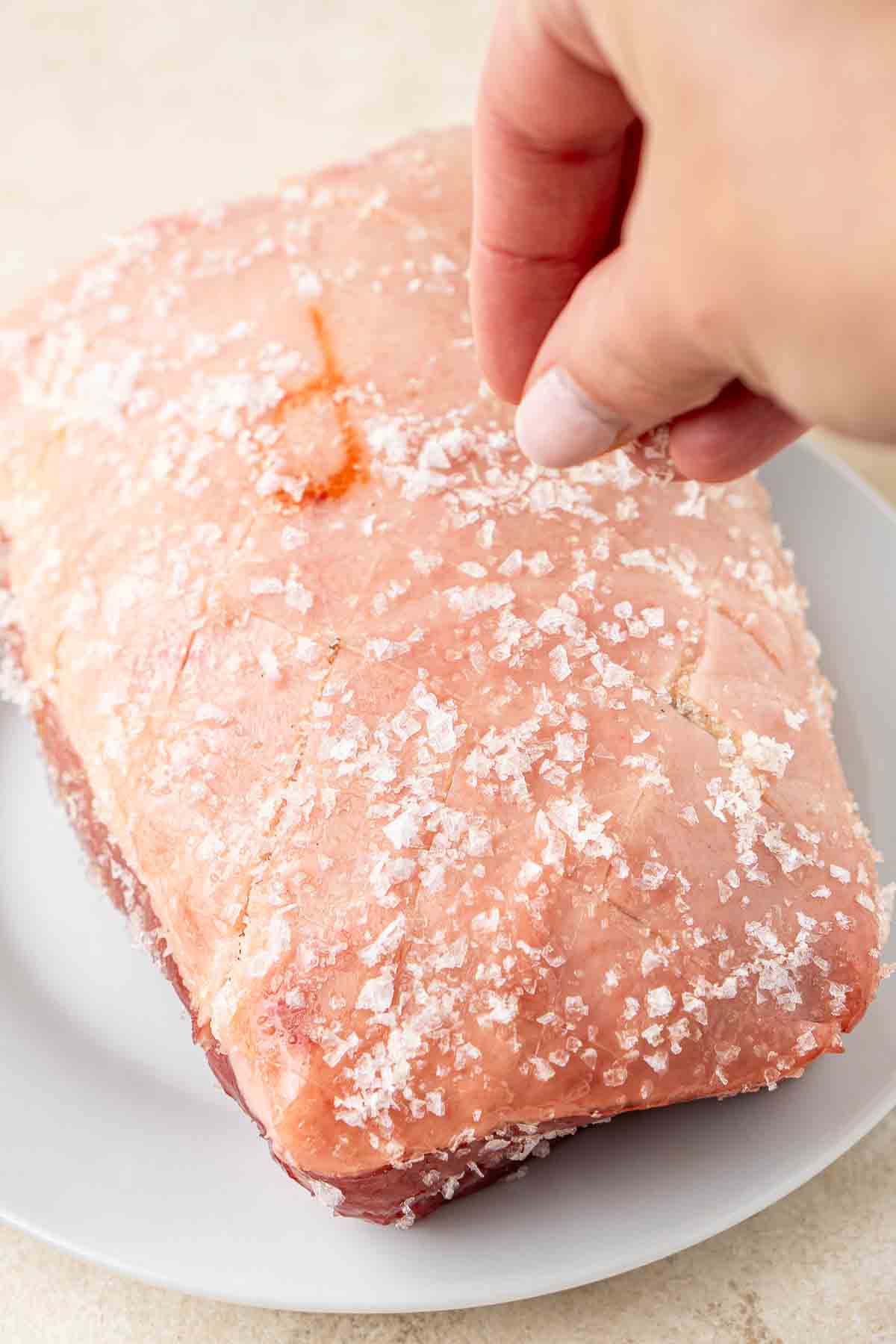
From here, pat the skin dry again with a paper towel and then rub olive oil over the pork. Generously rub the sea salt into the skin.
Preheat the air fryer at 200ºC (400ºF) or just let the air fryer run for a few minutes at this temperature. Gently place the pork in the basket skin side up, and cook for 30 minutes or until the you can see the crackling formed on the top.
Turn the air fryer temperature down to 160ºC (325ºF) and continue to cook the pork for 20-25 minutes per 500 grams (1 lbs). For my 1kg pork roast, this meant an additional 40 minutes.
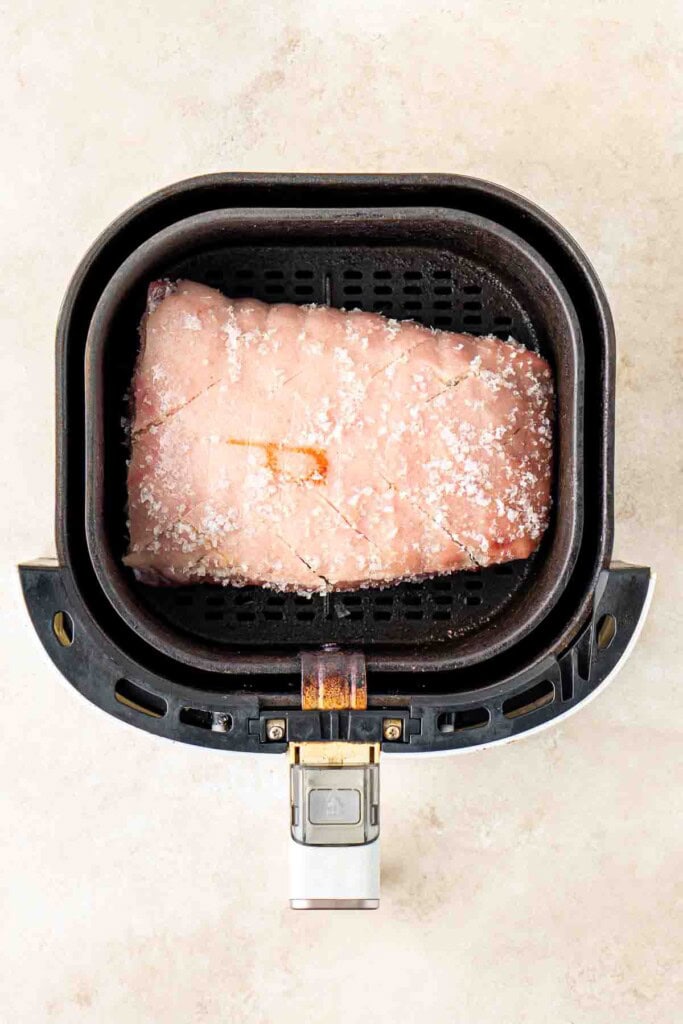
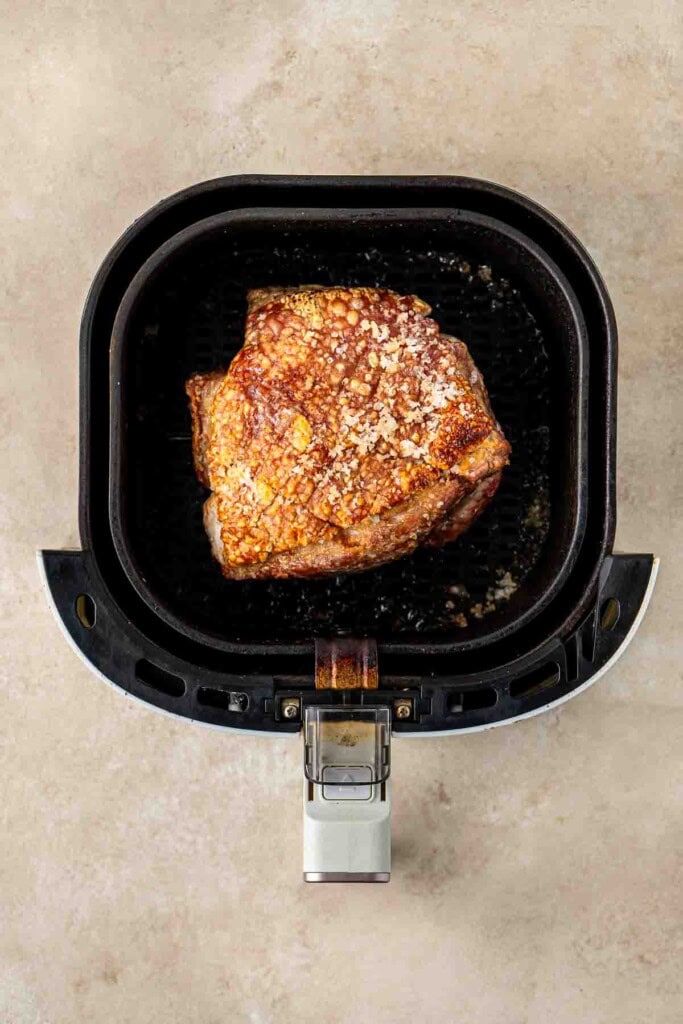
The easiest way to know your pork is done is to use a thermometer. It completely takes the guess work out of it and ensures you get perfectly cooked meat every single time. Your pork will be cooked when the internal temperature reaches between 70°C and 75°C (160°F – 170°F) depending if you want your pork medium or well done.
Wrap the cooked pork in aluminium foil and let rest for 10 minutes before carving into slices and serving alongside your favourite sides.
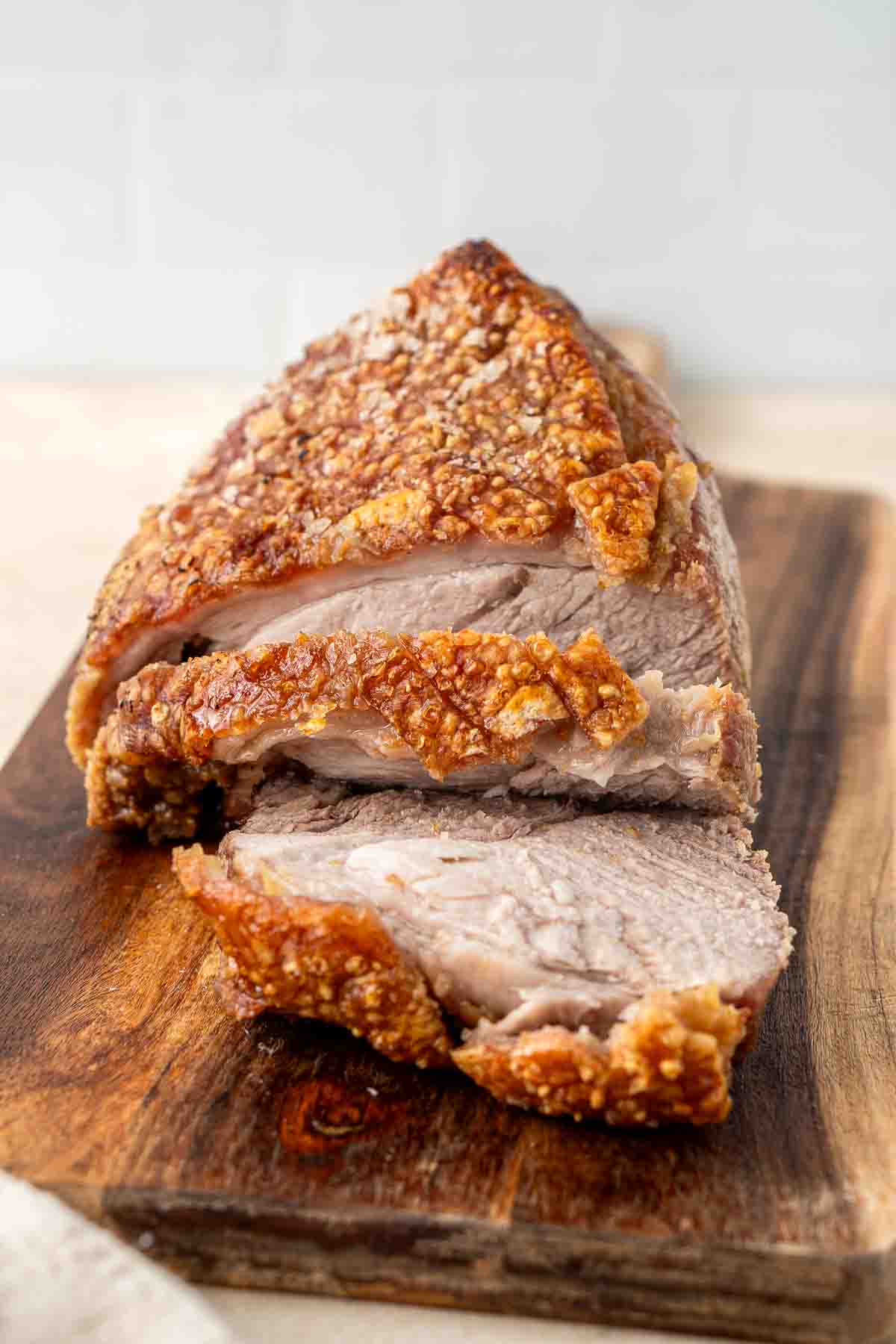
What to serve with pork roast
If you’re wanting a classic Sunday roast, you can serve your pork roast with oven roasted vegetables, air fryer roast potatoes, or creamy mashed potato and steamed green beans.
Other options include:
- Crispy Salt and Vinegar Smashed Potatoes
- Oven Baked Potato Wedges with Herb Mayo
- Roasted Cauliflower and Chickpea Salad
- Vegan Cauliflower Cheese Bake
- Roasted Vegetable Salad
- The BEST Dairy Free Potato Salad
Pork roast also is made extra delicious with a generous drizzle of gravy!
Recipe FAQs
Use a boneless pork leg roast or pork shoulder for this recipe that has a nice thick layer of fat for our crispy crackling. These come in all sizes so make sure to find one that will be suitable for the size of your air fryer!
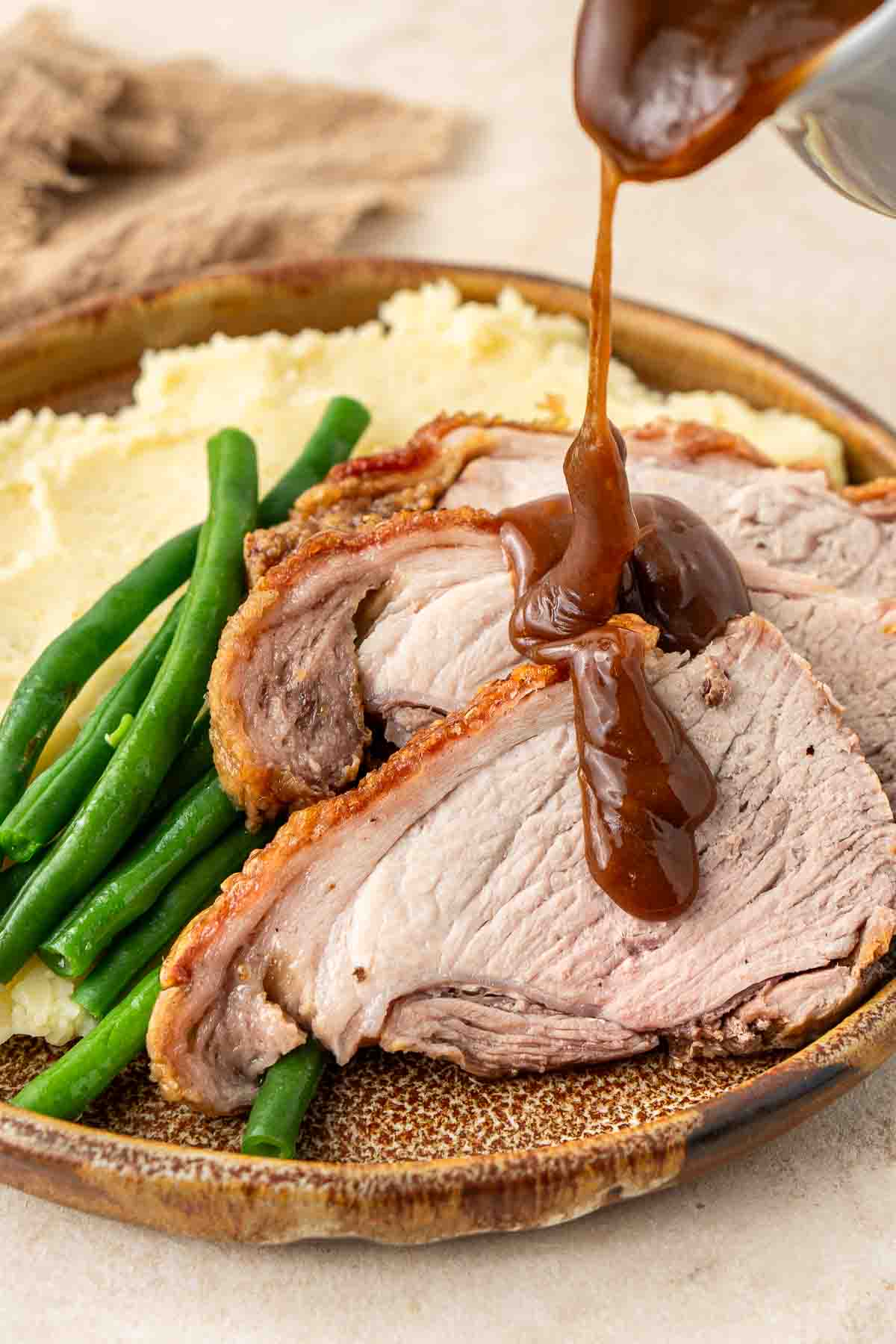
If you do make this recipe, please be sure to leave a comment and ⭐⭐⭐⭐⭐ rating below! And tag any of your creations on Instagram with @eightforestlane as I would love to see.
More air fryer recipes:
Air Fryer Chicken Schnitzel
Air Fryer Teriyaki Salmon
Air Fryer Pork Belly Bites
Air Fryer BBQ Chicken Thighs
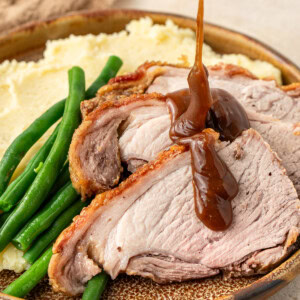
Air Fryer Roast Pork
Equipment
Ingredients
- 1-1.5 kilogram pork leg roast size will depend on what will fit in your air fryer
- 1 tablespoon olive oil
- 1 tablespoon course or flaky sea salt (not table salt)
Instructions
- Remove the pork from its wrapping and pat it dry with a paper towel. Place it on a plate, uncovered, in the fridge overnight to dry out. (If short on time, even 1 hour will help.)
- If tied and scored, consider removing the twine for better crackling. Score the skin further if needed to ensure evenness and pat the skin dry again with a paper towel. Rub olive oil over the pork then generously rub sea salt into the skin.
- Preheat the air fryer at 200ºC (400ºF) for a few minutes.
- Place the pork in the air fryer basket skin side up and cook at 200ºC (400ºF) for 30 minutes until the crackling forms.
- Reduce the temperature to 160ºC (325ºF) and continue cooking for 20-25 minutes per 500 grams (1 lb). For a 1kg pork roast, cook for an additional 40 minutes. The pork is done when the internal temperature reaches 70°C-75°C (160°F-170°F), depending on your preference for medium or well done.
- Wrap the cooked pork in aluminium foil and let it rest for 10 minutes. Carve into slices and serve with your favourite sides.
Nutrition
Nutritional information is provided as a guide only and is calculated using automated online tools, therefore we cannot guarantee the accuracy. We encourage you to make your own calculations based on the actual ingredients used in your recipe.

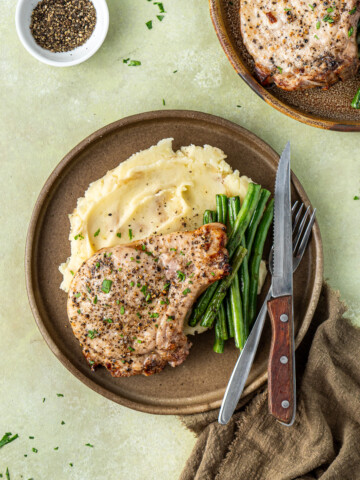
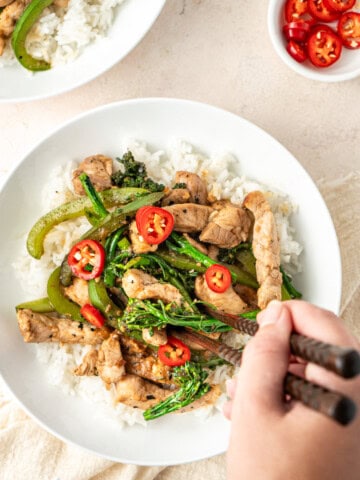
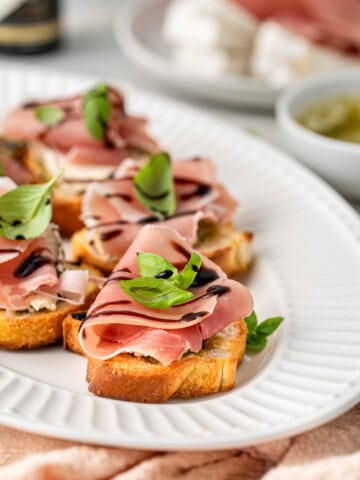
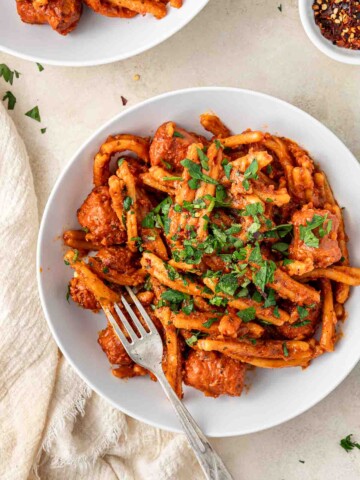
Made this recipe? Leave a review!